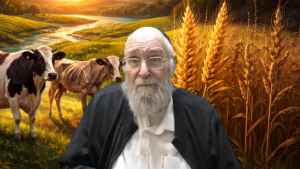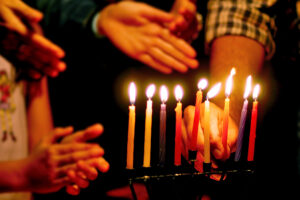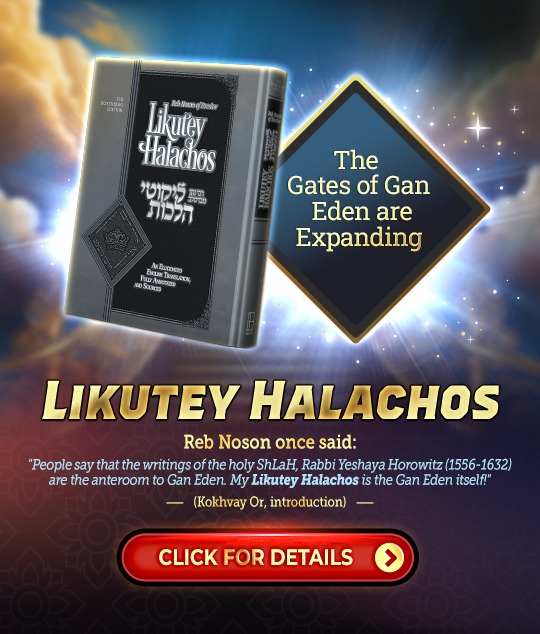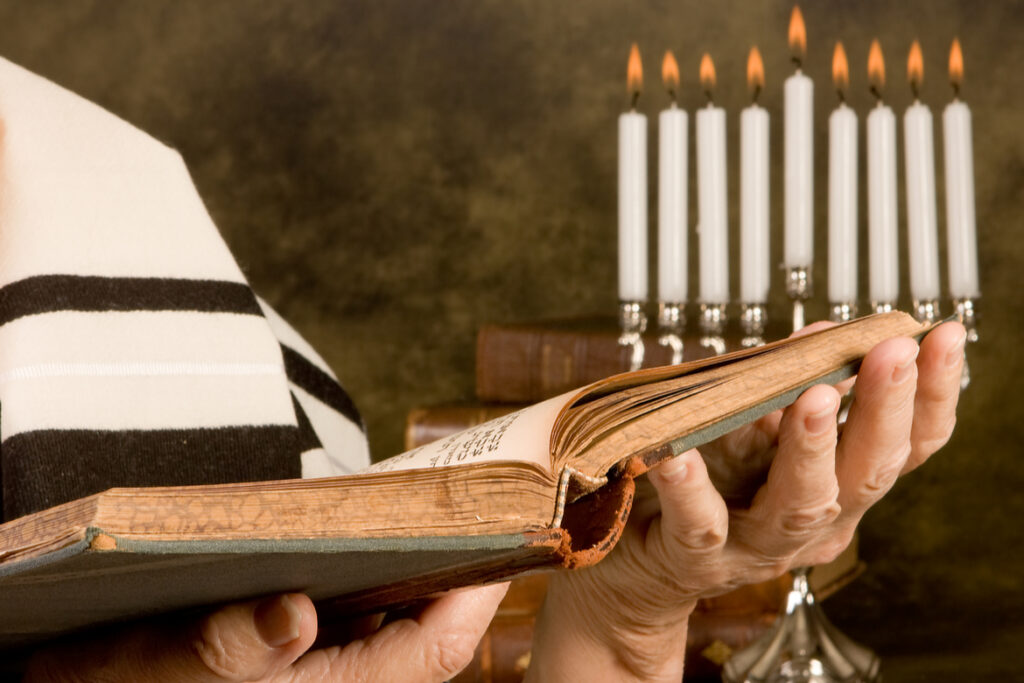The Pathway to Forgiveness and Teshuvah
A Pattern of Fall and Return
In Parshat Eikev, Moshe Rabbeinu recounts pivotal moments in the journey of the Jewish people, including the giving of the Torah, the sin of the golden calf, and the eventual forgiveness from Hashem. Beneath the surface of this historical review lies a profound spiritual message: no matter how far one falls, there is always a path to return—Teshuvah is always possible.
The Parshah outlines a remarkable timeline of 120 days, divided into three stages of forty days each. This structure reflects not just the chronological unfolding of events, but a spiritual process of descent, intercession, and eventual forgiveness.
The First Forty Days: Receiving the Torah
On Vav Sivan (6th of Sivan), Moshe Rabbeinu ascended Har Sinai for forty days and forty nights to receive the Torah. This wasn’t merely a one-time revelation—it was a process of internalizing Divine wisdom directly from Hashem. During these forty days, Moshe didn’t eat or sleep, and Hashem willingly transmitted the Torah to him in its pristine, elevated form.
However, this period ended in tragedy. On the 17th of Tammuz, Moshe descended the mountain to find the Jewish people involved in the sin of the golden calf. In response, he shattered the first set of Luchot (Tablets), symbolizing a broken connection between Heaven and Earth.
The Second Forty Days: Petitioning for Forgiveness
Immediately after the fallout, Moshe ascended once again—this time not to receive the Torah, but to plead on behalf of the people. These forty days were filled with Divine anger and Moshe’s intense prayer. The Torah says he “fell before Hashem” and fasted for another forty days and nights, begging for forgiveness on behalf of the nation. This period was marked by uncertainty and darkness, as Moshe struggled to awaken Hashem’s compassion.
According to Rashi on Devarim 9:18, Moshe’s second ascent began on the 18th of Tammuz and continued until the 29th of Av. It was only on this final day that Hashem became nitratzah—reconciled—with the Jewish people. Hashem then instructed Moshe to prepare a second set of Luchot, marking a shift from punishment to the beginning of Teshuvah and rectification.
The Third Forty Days: The Second Luchot
With Hashem’s renewed willingness, Moshe began a third period of forty days starting on Rosh Chodesh Elul. During this final ascent, he brought the second set of Luchot, and Hashem re-gave the Torah in a new form—one that could accommodate a nation that had sinned and was in need of repair.
This period concluded on Yom Kippur, when Hashem declared, “Salachti kidvarecha”—“I have forgiven, as you have spoken.” This moment was the culmination of Moshe’s prayers and the full return of Hashem’s closeness to the Jewish people. It also established Yom Kippur as the eternal day of Teshuvah and forgiveness.
Yom Kippur: Complete Reconciliation
On Yom Kippur, at the close of the final forty days, Hashem told Moshe, “Salachti kidvarecha”—“I have forgiven, according to your words.” Rashi adds a key detail: this forgiveness came besimcha—with joy. It was not reluctant acceptance, but a ratzon shalem, a complete willingness to embrace the Jewish people once more. This day became eternally fixed as the time for forgiveness and atonement.
Moshe’s account in Devarim 10:10 reinforces this: the final forty days are compared to the first forty—both periods marked by Divine favor and openness. In contrast, the middle forty days were filled with anger and distance.
The Power of Modesty in Lasting Success
Rashi notes another striking difference: the first Luchot were given amidst awe-inspiring revelation—thunder, lightning, and heavenly fire—yet they were shattered. The second Luchot, however, were given quietly, without spectacle, and these remain with us until today. The lesson is clear: what is done with modesty endures, while things accompanied by public display are more vulnerable to ayin hara (the evil eye).
The initial burst of inspiration must be followed by a crash, not as punishment, but as preparation to receive the light in a deeper, more lasting way.
Why Not Modesty from the Start?
The Sfat Emet addresses the obvious question: if quiet, modesty, and hiddenness are the key to lasting success, why didn’t Hashem give the first Luchot that way? His answer reveals a deep truth—true humility is not the starting point. To reach genuine submission and inner receptivity, a person must first experience a great light, a burst of enthusiasm and inspiration, even if it leads to a fall.
This is precisely what happened: the first revelation ignited immense passion, but the sin of the golden calf brought a painful crash. During the forty days of Moshe’s intercession, the people fasted, repented, and were broken-hearted. Only then, in the final forty days, were they ready to receive the Torah in a state of humility and quiet strength.
From Enthusiasm to Submission
Rebbe Nachman, in Likutey Moharan 24, develops this principle. When a person is exposed to a great light, the natural reaction is to run toward it. But the light cannot be truly absorbed that way—it must be followed by a bounce back, often into difficulty or even failure. If the person’s desire (ratzon) remains alive, and he chooses to get up and begin again, the light will return—but now in a more internalized and enduring way.
The crash teaches caution, patience, and humility. The same light that once drew the person forward now comes in a form that can be held, integrated, and sustained.
From Enthusiasm to Collapse
The three sets of forty days reflect a deep spiritual process. The first forty began with the Jewish people eagerly awaiting Moshe’s return from Sinai. Their anticipation was so intense that it led to miscalculation. Over-enthusiasm clouded their judgment, leaving them unsettled and vulnerable to the yetzer hara.
The Midrash, quoted by Rashi, describes how the Satan took advantage, creating an illusory image of Moshe’s lifeless body suspended in the air. Panic set in. “Moshe is gone!” they concluded, and their desperation spiraled into the sin of the golden calf.
This crash led to the second forty days—a period of Divine anger. The nation was broken and unsure if forgiveness was even possible. Moshe ascended again, telling them only, “Perhaps I can atone for you.” The people waited in uncertainty, fasting and subdued.
The Turning Point: Ratzon and Simcha
At the close of the second forty days, Hashem declared His willingness to begin rectification: “Carve for yourself a second set of tablets.” On Rosh Chodesh Elul, Moshe ascended once more. By the time he descended on Yom Kippur, Hashem had proclaimed, “Salachti kidvarecha” — “I have forgiven according to your words” — besimcha, with joy.
This joy was not random; it flowed from the people’s ratzon, their inner will to return. Even after frustration and despair, they still longed to be close to Hashem. That desire opened the door for renewal. The ratzon is the seed; the simcha is the blossom.
Forty as a Spiritual Acronym
The forty-day cycle, hinted at in the word arba’im (ארבעים), contains a roadmap for spiritual resilience and growth. Each letter reflects a stage in the journey.
- Aleph symbolizes the Keter, the highest spiritual crown and the wondrous (pele) source from which the initial Divine inspiration flows. It is the call from above that awakens the soul to draw near to Hashem.
- Resh is redifah—the eager running toward that light. Like in Shir HaShirim, “Draw me after You, let us run,” the soul responds to even the smallest sign of Divine invitation with passionate pursuit.
- Bet represents betisha—the inevitable “smack” or setback. Just as the Jewish people’s joy and fervor after Matan Torah was abruptly shattered by the golden calf, so too in personal spiritual life, a person encounters moments of crashing and being pushed back. Every fall carries the echo of that national failing, testing one’s ability to withstand disappointment.
- Ayin is atzvut—the wave of sadness and depression that follows a fall. Feelings of rejection, futility, and defeat can easily pull a person down. Yet the test here is not to remain trapped in that darkness, but to find a way out.
- Yud points to the power of ten—ten days of Teshuvah, the Ten Commandments, the ten utterances of Creation, and the ten types of melody described in the Tikkunei Zohar (Tikkun 13). Rebbe Nachman taught that these ten types of song are the root of all joy. From lighthearted laughter and music to gratitude and dancing, and culminating in the unimaginable joy of the future redemption, all forms of holy joy trace back to these ten melodies. Practically, Breslov tradition identifies these ten with the Tikkun HaKlali—ten specific chapters of Tehillim which, when recited in their specific order, awaken joy at its spiritual source and help lift a person from sadness after a fall.
- Mem stands for mechilah—forgiveness. On Yom Kippur, Hashem told Moshe, salachti kidvarecha, “I have forgiven according to your words,” establishing it as a day of complete pardon given with joy. The number forty is also the measure of a kosher mikveh, which Reb Noson connects to tikvah—hope. Just as immersion in forty se’ah of water purifies the body, the spiritual process of arba’im cleanses and renews the soul, offering hope and the strength to begin again.
This entire sequence—Aleph, Resh, Bet, Ayin, Yud, Mem—teaches that setbacks are not the end. As mentioned above, the Sfat Emet reveals that the initial burst of inspiration must be followed by a crash, not as punishment, but as preparation to receive the light in a deeper, more lasting way. By persevering through the fall, rejecting despair, and actively seeking joy, one reaches the stage of forgiveness and the complete ratzon of Hashem.
May we have the merit to navigate these stages with faith, draw strength from the teachings and advice of the true tzaddikim, rise after every fall, and reach the enduring joy of Divine closeness and salvation in every area of life.
Shabbat Shalom umevorach.
Meir Elkabas
- 0 comment





















